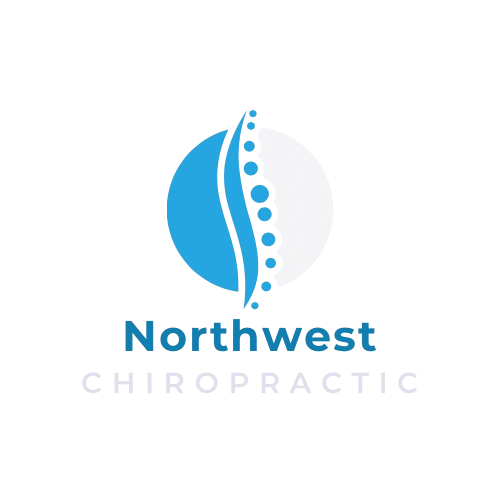
Chiropractic Care for Headaches: Natural Relief Without Medication
Headaches are a common ail of millions of people around the world, impacting productivity, mood, and quality of life. While some people reach for over-the-counter painkillers for relief, others are searching for natural alternatives that don’t rely on medications. Chiropractic care offers a drug-free, effective solution to many types of headaches, helping patients find long-lasting relief.
In this blog, we’ll explore how chiropractic care can help reduce and even eliminate headaches, offering a safe and holistic approach to pain management.
Understanding the Different Types of Headaches
Before diving into how chiropractic care helps, it’s important to understand the different types of headaches. This will help determine how chiropractic treatments can provide targeted relief:
Tension Headaches: The most common type, tension headaches are typically characterized by a dull, aching pain around the head, often accompanied by tightness or tenderness in the neck and shoulders. These headaches are often linked to stress, poor posture, and muscle tension.
Migraines: Migraines are more intense headaches that often involve throbbing pain, nausea, and sensitivity to light or sound. They can last for hours or even days and are sometimes triggered by certain foods, hormonal changes, or stress.
Cervicogenic Headaches: These headaches stem from issues in the neck, often caused by misalignment in the cervical spine or tension in the neck muscles. The pain typically starts in the neck and radiates upward toward the head.
Cluster Headaches: These are severe headaches that occur in cyclical patterns or clusters, usually around one eye. They can be extremely painful and last for a short period but often return frequently.
While tension and cervicogenic headaches are the most common headaches addressed by chiropractors, chiropractic care can also help alleviate migraine symptoms and prevent their recurrence in some patients.
How Chiropractic Care Helps with Headaches
Chiropractic care offers a drug-free, non-invasive way to address the underlying causes of headaches. Here's how chiropractic treatments can help reduce the frequency, intensity, and duration of headaches:
1. Correcting Spinal Misalignments (Subluxations)
One of the most common causes of tension headaches and cervicogenic headaches is misalignment in the spine, particularly in the cervical (neck) region. Misalignments, known as subluxations, can disrupt nerve function and lead to pain and muscle tension in the neck and head.
Chiropractors use precise spinal adjustments to realign the spine and restore proper nerve function. This helps to reduce the tension in the neck and upper back, improving blood flow and allowing the muscles to relax. When spinal misalignments are corrected, the underlying cause of many headaches is addressed, leading to relief and fewer occurrences.
2. Relieving Muscle Tension and Stress
Tension headaches are often caused by tight, overworked muscles in the neck, shoulders, and upper back. Stress, poor posture, and long hours spent sitting or working on a computer can lead to muscle imbalances, resulting in tension and headache pain.
Chiropractors can use spinal adjustments and soft tissue therapies such as massage and stretching techniques to relieve muscle tightness and improve flexibility in the affected areas. By releasing muscle tension, chiropractic care helps to reduce the frequency of tension headaches and improve overall muscle health.
3. Improving Posture
Poor posture, such as slouching or forward head posture, is a common culprit behind tension headaches and neck pain. When the head juts forward or the spine is misaligned, the muscles and ligaments in the neck and upper back have to work harder to support the weight of the head, leading to pain and discomfort.
Chiropractic adjustments can improve posture by realigning the spine and correcting imbalances. Chiropractors can also provide advice on ergonomic posture and recommend exercises to strengthen the muscles that support the spine, reducing strain and preventing headaches caused by poor posture.
4. Enhancing Blood Flow and Reducing Inflammation
Chiropractic care can improve circulation and reduce inflammation in the neck and head, both of which are factors in headache pain. Adjustments and soft tissue therapies increase blood flow to the affected areas, helping to relieve muscle spasms and reduce swelling that may contribute to pain.
For migraine sufferers, chiropractic care can also help reduce the frequency and severity of attacks by promoting better blood flow throughout the body, which can help prevent the constriction of blood vessels in the head—a common trigger for migraines.
5. Reducing Stress and Promoting Relaxation
Stress is a major trigger for many headaches, especially tension and migraine headaches. Chiropractic care promotes relaxation by reducing tension in the muscles and correcting misalignments that contribute to stress in the body. Additionally, chiropractic adjustments can help lower the levels of cortisol, the stress hormone, in the body.
By addressing the physical aspects of stress and promoting overall well-being, chiropractic care can help patients cope with daily stressors more effectively, leading to fewer headaches and a better quality of life.
6. Personalized Treatment Plans
Chiropractors take a personalized approach to treating headaches, tailoring treatment plans to each patient’s unique needs and triggers. After a thorough evaluation of your symptoms, posture, and spine, your chiropractor will design a treatment plan that may include spinal adjustments, stretches, exercises, and lifestyle modifications. This holistic approach addresses both the immediate symptoms and the underlying causes of your headaches.
Why Choose Chiropractic Care for Headache Relief?
There are several compelling reasons why chiropractic care is a preferred treatment option for many people suffering from headaches:
Drug-Free Treatment: Chiropractic care offers a natural alternative to medications, helping you avoid potential side effects from painkillers or prescription drugs.
Long-Term Relief: While medications may only mask the symptoms, chiropractic adjustments address the root cause of headaches, offering long-term relief.
Non-Invasive: Chiropractic care is a non-invasive treatment, meaning you won’t need surgery or injections to find relief.
Holistic Approach: Chiropractic care doesn’t just focus on the head or neck, but looks at the body as a whole, improving overall health and wellness.
What to Expect During a Chiropractic Visit for Headaches
When you visit a chiropractor for headaches, the first step is a thorough consultation and examination. The chiropractor will ask about your headache history, lifestyle, posture, and any other relevant health issues. A physical exam will follow, focusing on the spine, neck, and any areas of tension or discomfort.
Based on the findings, your chiropractor will recommend a personalized treatment plan. This may include spinal adjustments, soft tissue therapies, and exercises to help you manage stress and improve posture. In most cases, patients begin to notice improvement in headache frequency and intensity after just a few treatments.
If you're tired of relying on medication to manage your headaches, chiropractic care may offer the natural relief you've been looking for. By addressing the root causes of headaches—such as spinal misalignments, muscle tension, poor posture, and stress—chiropractic adjustments can reduce the frequency, severity, and duration of your headaches. With a personalized, drug-free treatment plan, chiropractic care offers a holistic and long-term solution to headache relief.
If you’re ready to experience relief from headaches without relying on medications, consider visiting a chiropractor. Schedule a consultation today and start your journey toward a pain-free, healthier life!
